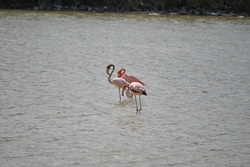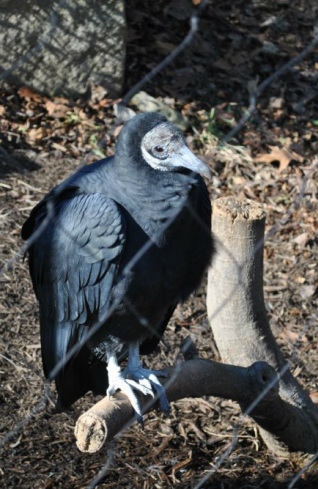
Richmond's gone wild! In this city, the combination of spring and the James River makes my urban home a great place to view wildlife, particularly birds.
During my frequent walks across the Mayo Bridge, I'm seeing lots of herons, gulls, loons, hawks, geese and osprey on a regular basis. Sometimes there are eagles and cormorants, too.
Put those sightings together with the North Caicos birds I often see-pelicans, osprey, sandpipers, Cuban crows, hummingbirds, kestrels and flamingos-and you get a bird-watcher. I enjoy stopping to observe how a bird takes off from or dives into water, admire the effortless glide, or get into the drama of territorial battles.
Yet I hesitate to align myself with the worldwide birding community. Those are the bird-obsessed folks who provide all the stereotypes: bucket hats, binoculars slung around the neck, life lists in hand. You've seen them in cartoons ("Look! It's a yellow-bellied sapsucker!") and anywhere along a major migration route.
It's not that I'm opposed to looking like a stereotype. I already pretty much fit the profile of the boomer crunchy-granola NPR listener, it seems, and that doesn't bother me. What turns me off is the birder ethos, especially those life lists.
I want to observe a bird, not just tick it off a list saying I've seen it. I want to stand there and muse over the miracle of flight, animal intelligence and evolution. I want to think about birdness, not humans who can count.
Because I want no part of the counting, I'd be considered a casual bird-watcher rather than a Birder (with a capital "B"). There are many like me, I suspect. Ironic, though, that our casual observances are the ones that go into quality, while those considered hard-core are the ones concerned with shallow quantity.
During my frequent walks across the Mayo Bridge, I'm seeing lots of herons, gulls, loons, hawks, geese and osprey on a regular basis. Sometimes there are eagles and cormorants, too.
Put those sightings together with the North Caicos birds I often see-pelicans, osprey, sandpipers, Cuban crows, hummingbirds, kestrels and flamingos-and you get a bird-watcher. I enjoy stopping to observe how a bird takes off from or dives into water, admire the effortless glide, or get into the drama of territorial battles.
Yet I hesitate to align myself with the worldwide birding community. Those are the bird-obsessed folks who provide all the stereotypes: bucket hats, binoculars slung around the neck, life lists in hand. You've seen them in cartoons ("Look! It's a yellow-bellied sapsucker!") and anywhere along a major migration route.
It's not that I'm opposed to looking like a stereotype. I already pretty much fit the profile of the boomer crunchy-granola NPR listener, it seems, and that doesn't bother me. What turns me off is the birder ethos, especially those life lists.
I want to observe a bird, not just tick it off a list saying I've seen it. I want to stand there and muse over the miracle of flight, animal intelligence and evolution. I want to think about birdness, not humans who can count.
Because I want no part of the counting, I'd be considered a casual bird-watcher rather than a Birder (with a capital "B"). There are many like me, I suspect. Ironic, though, that our casual observances are the ones that go into quality, while those considered hard-core are the ones concerned with shallow quantity.

 RSS Feed
RSS Feed